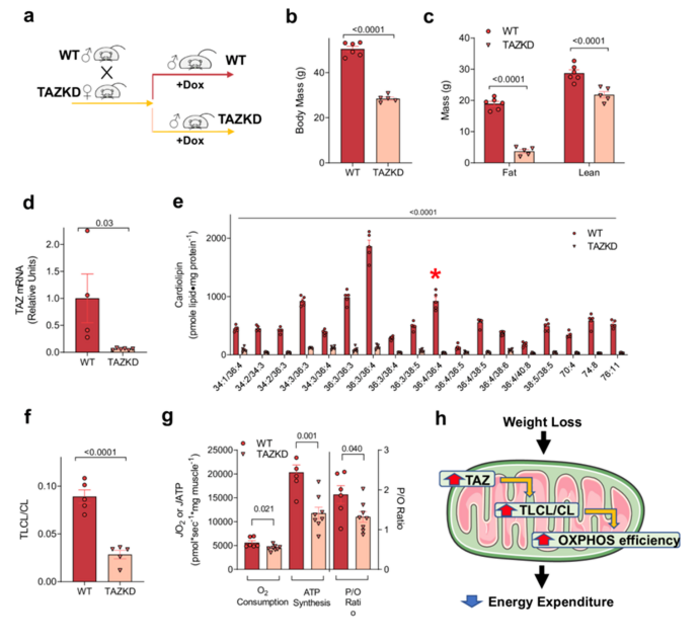In April 2023, Professor Katsuhiko Funai at University of Utah published a study in Life Metabolism entitled “Weight loss increases skeletal muscle mitochondrial energy efficiency in obese mice”. Funai and colleagues found that during weight loss in obese mice, the efficiency of skeletal muscle mitochondrial oxidative phosphorylation increased, resulting in a reduction in energy expenditure throughout the body, which in turn contributes to weight loss rebound.
Specifically, obese mice were treated with dietary interventions to lose weight, followed by a combination of high-resolution respirometry and fluorometry measurements. In addition, changes in mitochondrial energy metabolism, mitochondrial proteomes, and mitochondrial lipidomes were examined in weight-loss mice. The results showed that there was no significant change in mitochondrial proteomes or respiratory chain supercomplex formation in skeletal muscle of weight-loss mice, but oxidative phosphorylation efficiency significantly increased (Figure 1). Finally, by analyzing the lipidome of skeletal muscle in weight-loss mice, the authors found that weight loss accelerated the remodeling of mitochondrial cardiolipin (CL) acyl-chains to increase tetralinoleoyl CL (TLCL) content, a species of lipids thought to be functionally critical for the respiratory enzymes. Further studies showed that knocking down CL acyltransferase tafazzin reduced TLCL levels as well as skeletal muscle oxidative phosphorylation levels, allowing mice to avoid diet-induced weight gain (Figure 1). Altogether, the evidence suggests that weight loss leads to an increase in skeletal muscle mitochondrial energy production efficiency, thereby reducing energy expenditure throughout the body.
###
Reference: Patrick J Ferrara et al. (2023) Weight loss increases skeletal muscle mitochondrial energy efficiency in obese mice. Life Metabolism. https://academic.oup.com/lifemeta/advance-article/doi/10.1093/lifemeta/load014/7103241
About Higher Education Press
Founded in May 1954, Higher Education Press Limited Company (HEP), affiliated with the Ministry of Education, is one of the earliest institutions committed to educational publishing after the establishment of P. R. China in 1949. After striving for six decades, HEP has developed into a major comprehensive publisher, with products in various forms and at different levels. Both for import and export, HEP has been striving to fill in the gap of domestic and foreign markets and meet the demand of global customers by collaborating with more than 200 partners throughout the world and selling products and services in 32 languages globally. Now, HEP ranks among China’s top publishers in terms of copyright export volume and the world’s top 50 largest publishing enterprises in terms of comprehensive strength.
About Life Metabolism
Life Metabolism is a fully open access, peer-reviewed journal that publishes one volume per year online, providing a platform for the publication of works of high significance and broad interest in all areas of metabolism. Life Metabolism welcomes several different article types, including original article, review article, research highlight, letter, editorial, perspective, and so on. Once a paper is accepted, Life Metabolism can publish a precopyedited, preproofed version of the paper online within 48 hours of receiving a signed licence, and this will be replaced by a copyedited, proofed version of the paper as soon as it is ready. The Editors-in-Chief are professors Peng Li at Tsinghua University and John R Speakman at University of Aberdeen, UK. In the first three years, there will be no publication costs for publishing in Life Metabolism, and Open Access fees will be waived.


